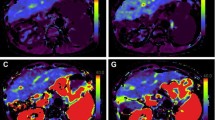Abstract:
We aimed to investigate whether the presence of blood within the intestinal lumen after variceal bleeding would lead to reactive intestinal hyperemia, which in turn could result in the worsening of portal hemodynamics, and thus bleeding recurrence. Two models of portal hypertensive Wistar rats were used: 32 CCl4-cirrhotics with a low index of portal-systemic shunting and 32 that had been previously subjected to portal vein stenosis, with a high index of portal-systemic shunting; 32 Wistar rats served as controls. The rats were divided into four groups, each comprising 8 cirrhotics, 8 portal vein stenosis rats, and 8 controls. Intestinal microcirculation and portal blood flow were assessed by laser-Doppler and transit-time ultrasonic flow probes, respectively, before and 60 min after the injection of 2 ml of blood (groups 1 and 2) or an equal volume of NaCl 0.9% (placebo; groups 3 and 4) into the intestinal lumen. Octreotide (0.2 μg/100 g body weight [BW]) (groups 1 and 3) or NaCl 0.9% (groups 2 and 4) was then given subcutaneously, and 30 min later the final measurements were performed. The presence of blood within the intestinal lumen resulted in an increase in intestinal microcirculation in rats in all groups, while portal blood flow was increased in portal vein stenosis rats and controls, and decreased in cirrhotics. The presence of NaCl 0.9% had no effect. Octreotide, but not NaCl 0.9%, led to a decrease in both intestinal microcirculation and portal blood flow. The findings of this study suggest that intestinal hyperemia induced by digestion of blood in the enteric lumen increases or decreases portal blood flow, the result being strongly related to the portal hypertension model used. Since the main difference between the models was the extent of portal-systemic shunting, this may suggest a relationship between portal blood flow and portal-systemic shunting. This relationship could explain why variceal bleeding stops in some patients but recurs in others.
Similar content being viewed by others
Author information
Authors and Affiliations
Additional information
(Received Sept. 29, 1997; accepted Jan. 23, 1998)
Rights and permissions
About this article
Cite this article
Kotzampassi, K., Eleftheriadis, E. Blood digestion-induced splanchnic hyperemia and portal blood flow in portal hypertensive rats and the role of octreotide. J Gastroenterol 33, 678–683 (1998). https://doi.org/10.1007/s005350050155
Issue Date:
DOI: https://doi.org/10.1007/s005350050155




